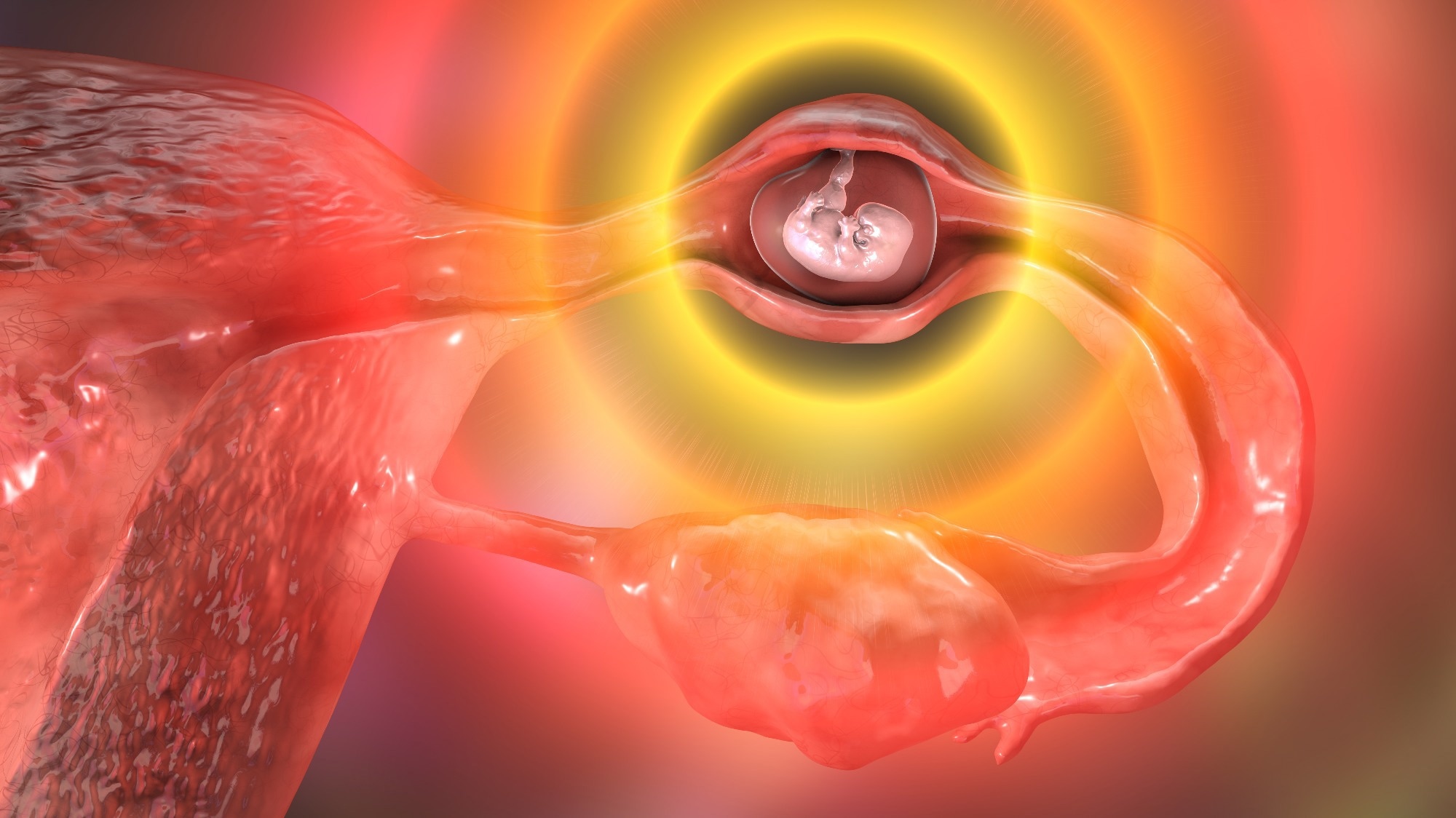A new study published in Scientific Reports explores the potential utility of salivary proteins in providing an early warning of ectopic pregnancy (EP), which can be a fatal maternal condition.
 Study: Ectopic pregnancy: search for biomarker in salivary proteome. Image Credit: Kateryna Kon / Shutterstock.com
Study: Ectopic pregnancy: search for biomarker in salivary proteome. Image Credit: Kateryna Kon / Shutterstock.com
Introduction
EP is defined as the extrauterine implantation and development of the conceptus. EP primarily occurs in the fallopian tubes; however, EP may arise in other sites. Current estimates indicate that EP is responsible for 3.5-7% of maternal deaths in various countries worldwide.
Africa has the highest EP incidence; however, its incidence is also rising in the United States, particularly among women between the ages of 26 and 30 years. Some of the risk factors of EP include sexually transmitted infections (STIs); however, STIs are absent in about 50% of diagnosed cases. Additional risk factors for EP include tubal damage, pelvic inflammatory disease (PID), smoking, infection causing defective ciliary movement or poor tubal muscular propulsion of the fertilized ovum, and low adrenomedullin levels.
The diagnosis of EP is based on the measurement of serum β human chorionic gonadotropic (βhCG) and progesterone levels, coupled with ultrasound imaging. Transvaginal ultrasound provides a definitive diagnosis of the presence, status, and site of the EP. Conservative and surgical management has been described, depending on the presentation and other risk factors.
Saliva is a biological fluid that offers a non-invasive diagnostic sample for various physiological and pathological states. In fact, saliva contains over 3,600 proteins and 12,500 peptides, including hormones, antibodies, enzymes, mucin, fats, and electrolytes.
The proteins in saliva are also found in plasma, as salivary peptides also comprise 80% of plasma peptides. The dominant salivary peptide is mucin, which is a starch-digesting enzyme amylase.
Salivary proteins have been reported to be markers of multiple diseases, including lung and oral cancer, autoimmune disease, high blood sugar, and human immunodeficiency virus (HIV) infection. Hormonal events such as ovulation may also induce salivary changes.
Salivary proteins also provide important information on many diseases, as the levels of these proteins can reflect inflammatory and immunological skin pathologies and exhibit characteristic changes in pregnancy that relate to obstetric outcomes.
Several saliva-based diagnostic tests have been developed. Some of these have involved the analysis of activins A and B, inhibin A, A disintegrin and metalloprotease-12 (ADAM), pregnancy-associated plasma protein A (PAPP-A), pregnancy-specific B1-glycoprotein (SP1), placental-like growth factor (PGF), vascular endothelial growth factor (VEGF), and glycodelin (Glyc).
Intensive investigation on the salivary proteins specific to EP can potentially lead to setting up of a panel of candidate biomarkers and developing a non-invasive protein-based diagnostic kit.”
What did the study show?
The current study examined salivary proteins that may be selectively raised in EP using gel-based protein separation. The separated protein bands were then identified using liquid chromatography-tandem mass spectrometry (LC-MS/MS).
A total of 326 separate proteins were identified in saliva samples. Of these, 101 proteins were only identified in patients with ruptured EP, many of which were defense-related proteins.
These proteins were associated with the innate immune system, neutrophil degranulation, interactions between the blood vessel wall and other substances, as well as activation of the nuclear factor kB (NF-kB) pathway.
Fibronectin 1 (FN1), vitamin D-binding protein, apolipoprotein B-100 (ApoB), cystatin-A, and complement C4-B were some of the notable salivary proteins identified in ruptured EP cases. Immune cells may also be implicated in tubal rupture; however, more research is needed to confirm this hypothesis.
Glutathione-S-transferase omega-1 (GSTO1) was identified as a potential marker in the saliva of patients with ruptured EP, as it was also identified in the serum of these patients. GSTO1 protects the body against environmental and foreign toxins.
A set of nine proteins were associated with a major degree of crosstalk, of which included quiescin sulfhydryl oxidase 1 (QSOX1), chitinase 3 like 1 (CHI3L1), chitinase 1 (CHIT1), cathepsin Z (CTSZ), matrix metalloproteinase 8 (MMP8), phosphoglucomutase 1 (PGM1), GSTO1, FN1, and leukotriene A4 hydrolase (LTA4H), which were mostly found in EP samples.
Salivary proteins including complement C4-B, plasminogen activator inhibitor 2 and 1, and GSTO1 hold promise as potential biomarkers for ectopic pregnancy.”
Journal reference:
- Aarthy, A. P., Sen, S., Srinivasan, M., et al. (2023). Ectopic pregnancy: search for biomarker in salivary proteome. Scientific Reports. doi:10.1038/s41598-023-43791-7.